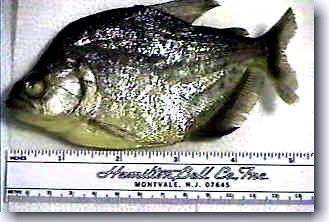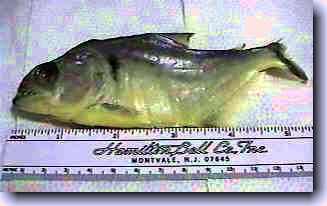Previous
work (Ortí et al. 1995) based on DNA sequences of mitochondrial (mt) rRNA genes
showed three main groups within the subfamily Serrasalminae:
(1) a
basal clade of herbivores (Colossoma, Mylossoma, Piaractus);
(2)
the "Myleus" clade (Myleus, Mylesinus, Tometes);
(3)
the "piranha" clade (Serrasalmus, Pygocentrus, Pygopristis,
Pristobrycon, Catoprion, Metynnis). The genus Acnodon was placed as
the sister taxon of clade (1+2). However, poor resolution within each clade was
obtained due to low levels of variation among rRNA sequences. Complete
sequences of the hypervariable mtDNA D-loop are now presented for a total of 40
taxa representing all genera in the subfamily to address intragroup
relationships. Phylogenetic analyses of these sequences identify the same
groupings as before and provide further evidence to support the following
observations:
(a)
the genera Serrasalmus and Pristobrycon are paraphyletic and
form a group that also includes Pygocentrus;
(b) Catoprion,
Pygopristis, and Pristobrycon striolatus form a well supported clade,
sister to the group described above in 'a';
(c)
distinction of subgenera within Myleus (i.e., Myleus, Prosomyleus,
Myloplus) is not supported;
(d) Mylesinus
and Myleus are paraphyletic, since Tometes sp. is the sister
taxon of Mylesinus paraschomburgkii and Mylesinus paucisquamatus
is most closely related to other species of Myleus.














